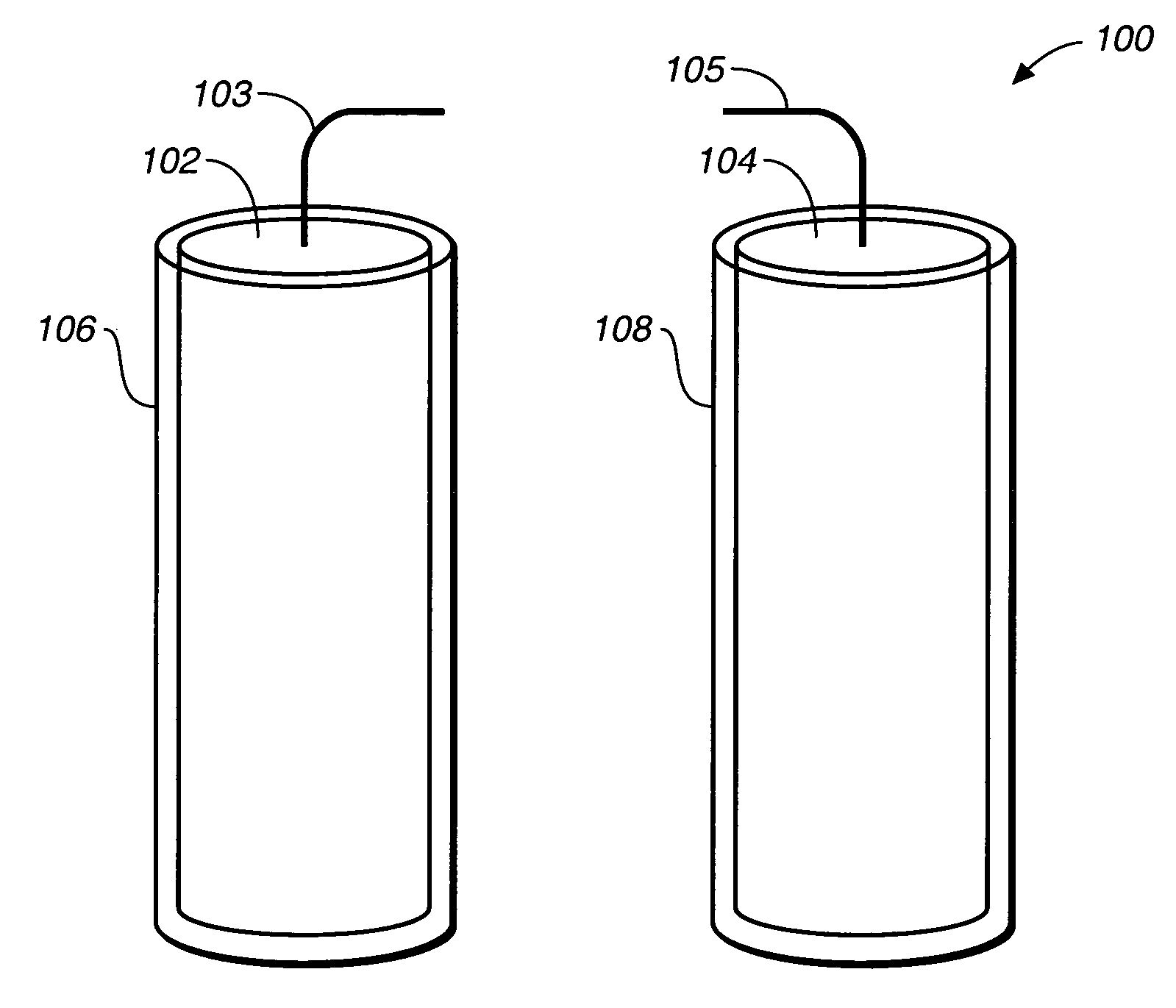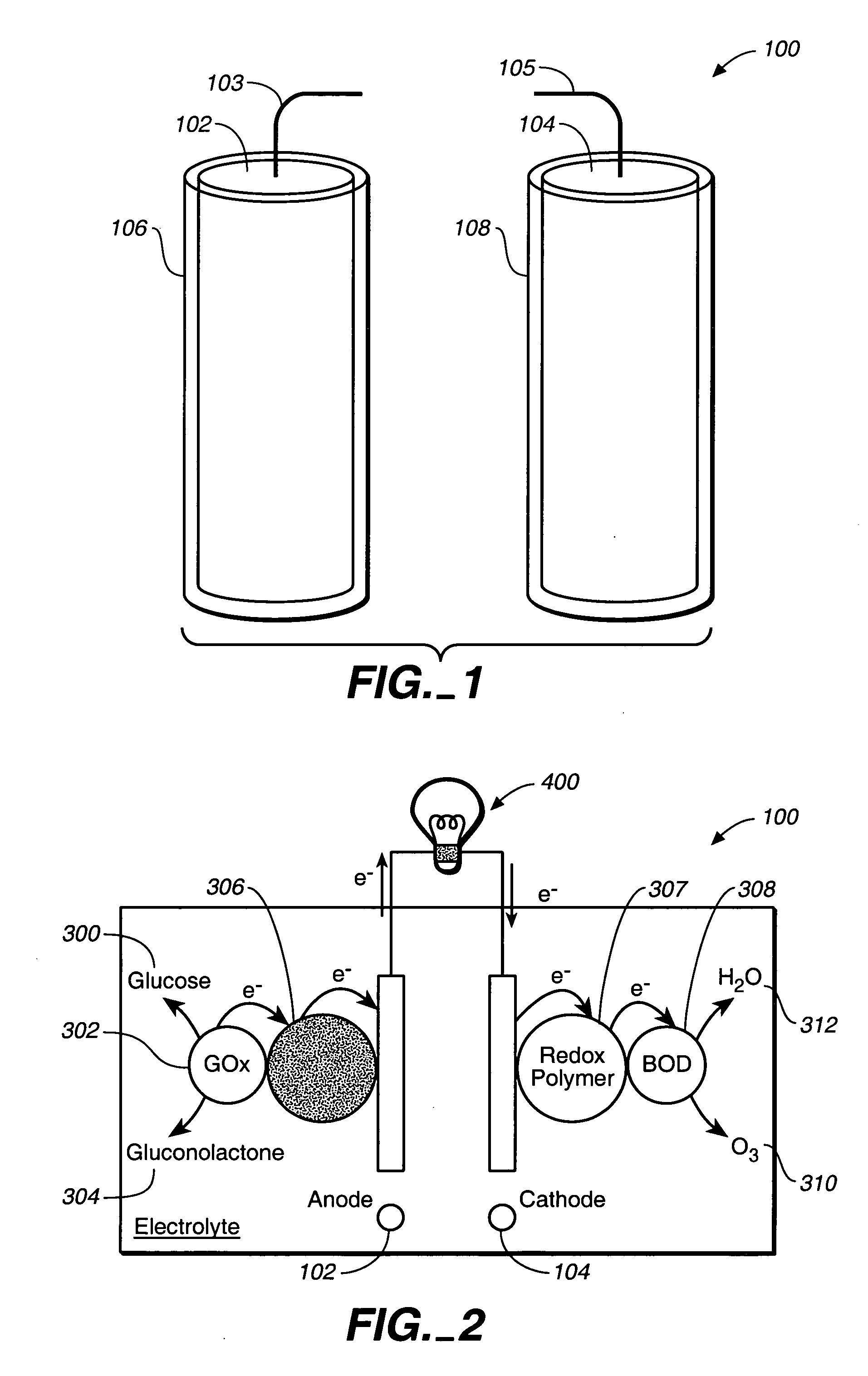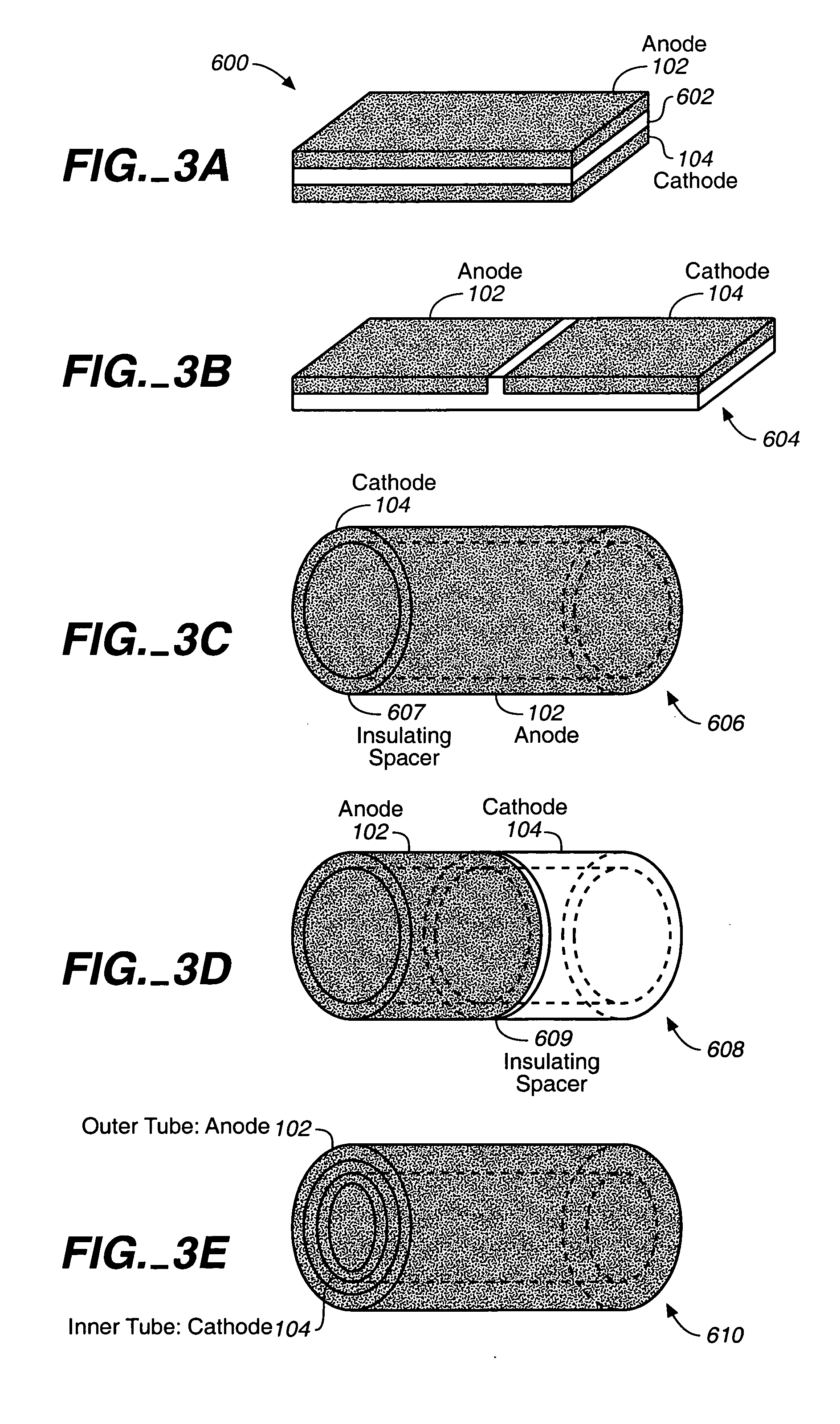Miniature biological fuel cell that is operational under physiological conditions, and associated devices and methods
a fuel cell and biological technology, applied in the field of microorganism fuel cells, can solve the problems of poor catalyst for oxygen reduction of anode electrocatalysts and poor catalysts for oxidation of fuel of cells, and achieve the effect of reducing physical dimensions and cell dimensions
- Summary
- Abstract
- Description
- Claims
- Application Information
AI Technical Summary
Benefits of technology
Problems solved by technology
Method used
Image
Examples
experimental example 1
M.v.-BOD on the Cathode
[0124]Chemicals and Materials: Bilirubin oxidase (EC 1.3.3.5) from M Verrucaria, catalase from bovine liver (EC 1.11.1.6), uric acid (sodium salt), spermine (hydrochloride salt), neomycin, gentamycin, 1,4,8,11-tetraazacyclotetradecane (cyclam), L-sodium ascorbate, 4-acetaminophen, NaIO4, NaCl, NaOH, KCNS, KBr, MgCl2, CaCl2, and NaF were purchased from Sigma (St. Louis, Mo.). Poly(ethylene glycol) (400) diglycidyl ether (PEGDGE) was purchased from Polysciences Inc. (Warrington, Pa.). A fresh solution of BOD in pH 7.4 20 mM phosphate buffer (PB) was prepared daily. The uric acid was dissolved in dilute NaOH and then neutralized with dilute H3PO4 to yield a 10 mM aqueous solution (Binyamin, G., Chen, T., Heller, A., J. Electroanal. Chem. 2001, 500, 604-611). The electrochemical measurements were performed in phosphate buffered saline (PBS) (pH 7.4 20 mM phosphate-buffered 0.15 M NaCl) except in the experiments where the pH and anion dependence of the steady-state...
experimental example 2
Tt.-BOD on the Cathode
[0154]Chemicals and Materials: BOD (EC 1.3.3.5, 1.3 U / mg1) from Trachyderma tsunodae was a gift from Amano, Lombard, Ill. NaCl, NaOH, KCNS, KBr, MgCl2, CaCl2, and NaF were purchased from Sigma, St. Louis, Mo. Poly(ethylene glycol) (400) diglycidyl ether (PEGDGE) was purchased from Polysciences Inc. (Warrington, Pa.). A fresh solution of BOD in pH 7.4 20 mM phosphate buffer (PB) was prepared daily. The uric acid was dissolved in dilute NaOH then neutralized with dilute H3PO4 to yield a 10 mM aqueous solution (Collman, J. P., Fu, L., Herrmann, P. C., Wang, Z., Rapta, M., Broring, M., Schwenninger, R., Boitrel, B., Angew. Chem. Int. Ed. Engl. 1998, 1998, 3397-3400). The electrochemical measurements were performed in pH 7.4 phosphate buffered saline (PBS, 20 mM phosphate, 0.15 M NaCl) except in the experiments where the pH and anion dependences of the steady-state, O2 electroreduction currents were determined. In these, borate, citrate, acetate, phosphate and Tris ...
experimental example 3
Characteristics of a Miniature Glucose Oxygen Biofuel Cell and its Operation in a Living Plant
[0188]In this experimental example, the temperature, pH, glucose concentration, NaCl concentration, and operating atmosphere dependence of the power output of a compartment-less, miniature glucose-O2 biofuel cell, comprised only of two bioelectrocatalyst-coated carbon fibers, each of 7-μm diameter and 2-cm length (Mano, N., Mao, F., Heller, A., J. Am. Chem. Sec. 2002, 124, 12962), was investigated. The bioelectrocatalyst of the anode consists of glucose oxidase from Aspergillus niger electrically wired by polymer I, having a redox potential of −0.19 V vs Ag / AgCl. That of the cathode consists of bilirubin oxidase from Trachyderma tsunodae wired by polymer II, having a redox potential of+0.36 V vs Ag / AgCl (Mano, N., Kim, H. -H., Zhang, Y., Heller, A., J. Am. Chem. Soc. 2002, 124, 6480; Mano, N., Kim, H. -H., Heller, A., J. Phys. Chem. B 2002, 106, 8842). Implantation of the fibers in a grape ...
PUM
| Property | Measurement | Unit |
|---|---|---|
| Fraction | aaaaa | aaaaa |
| Power | aaaaa | aaaaa |
| Concentration | aaaaa | aaaaa |
Abstract
Description
Claims
Application Information
 Login to View More
Login to View More - R&D
- Intellectual Property
- Life Sciences
- Materials
- Tech Scout
- Unparalleled Data Quality
- Higher Quality Content
- 60% Fewer Hallucinations
Browse by: Latest US Patents, China's latest patents, Technical Efficacy Thesaurus, Application Domain, Technology Topic, Popular Technical Reports.
© 2025 PatSnap. All rights reserved.Legal|Privacy policy|Modern Slavery Act Transparency Statement|Sitemap|About US| Contact US: help@patsnap.com



